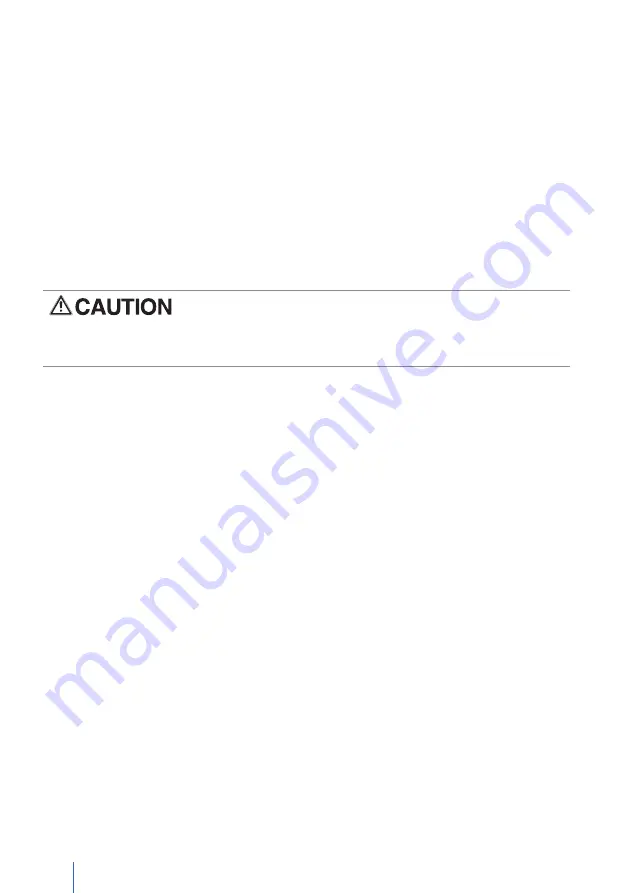
24
Chapter 2: Safety warnings
Instructions before commissioning
•
A malfunctioning device can endanger the patient or operator. Should the appliance
not start properly, or if the device’s automatic self-tests should fail, you must stop
operating the device. In such cases, the service provider must be informed.
•
Position the device so the mains plug is easily accessible and can be unplugged
quickly in the event of a potential hazard.
•
Do not use the device if the housing or the cable of the device or the power
supply are damaged.
Using oxygen
Risk of injury due to increased oxygen supply!
The oxygen supplied must not exceed a pressure of 500 hPa
and a flow of 15 l/min. The oxygen must be dosed using an
external flow meter.
•
Before commissioning, the patient must be instructed on site in their home envi-
ronment.
•
Consult with your dealer regarding the use of oxygen.
•
Make sure to follow your doctor’s instructions.
•
Observe the user’s manual of the manufacturer or distributor from whom you
obtain your oxygen.
•
If the patient is supplied with oxygen via the device, the FiO
2
should be measured.
•
On the LAVI, FiO
2
measurement is possible using the optional FiO
2
sensor. We
recommend using this particular sensor exclusively.
•
Keep the FiO
2
sensor out of the reach of children and animals.
•
To prevent incorrect calibration of the FiO
2
sensor, make sure fresh air is supplied
when operating the device.
•
The FiO
2
sensor contains a caustic liquid. Avoid skin or eye contact if there is a
sensor leak! Replace the sensor.
•
When supplying oxygen via the O
2
connection on the device, ensure that only dry
gas is used. Moisture may lead to device defects. If necessary, a humidifier can be
connected between the air outlet of the device and the patient.
•
The connection between the O
2
connection and the external O
2
source must be
absolutely airtight. Otherwise, leakage losses may occur during ventilation.
•
The oxygen supply should be stopped before ventilation is interrupted. We also
recommend allowing the device to run for several respiratory cycles without oxygen
supply after stopping ventilation.
Summary of Contents for LAVI
Page 2: ......
Page 18: ...18 Chapter 1 Introduction ...
Page 26: ...26 Chapter 2 Safety warnings ...
Page 27: ...Chapter 3 Description of device 27 Chapter 3 Description of Device ...
Page 33: ...Chapter 3 Description of device 33 Chapter 4 Commissioning ...
Page 51: ...Chapter 5 Device operation 51 Chapter 5 Operating the Device ...
Page 75: ...Chapter 6 Alarms and messages 75 Chapter 7 Cleaning and Exchange of Components ...
Page 81: ...Chapter 8 Routine checks and maintenance work 81 Chapter 8 Routine Tests and Maintenance Work ...
Page 84: ...84 Chapter 8 Routine checks and maintenance work ...
Page 85: ...Chapter 9 Appendix 85 Chapter 9 Annex ...
Page 98: ...98 Chapter 9 Appendix ...
Page 99: ...Chapter 9 Appendix 99 ...
Page 100: ...100 Chapter 9 Appendix ...
Page 101: ...Chapter 9 Appendix 101 ...
Page 102: ...102 Chapter 9 Appendix ...
















































